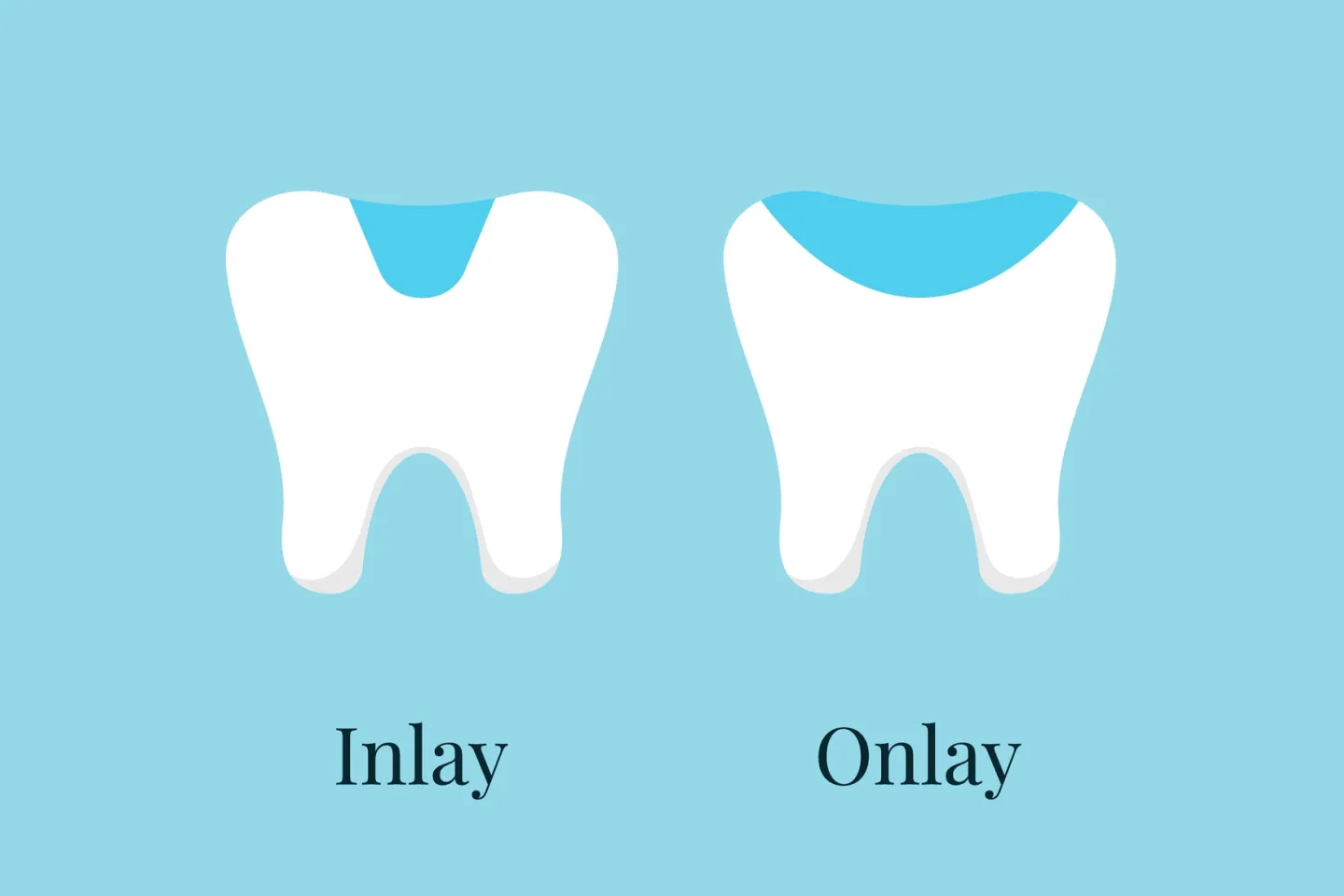
If you are concerned about the appearance of your old fillings, new tooth-colored treatments can restore and transform your teeth. Silver and gold fillings are a thing of the past as cosmetic treatments such as inlays and onlays are a new and effective option. Inlays and onlays fit inside the tooth where a cavity once was and seal it, and they come in a variety of tooth-colored materials for an enhanced, more uniform smile. As most inlay and onlay treatments replace old fillings, the cavity has already been removed and filled, making treatment easier, faster, and generally pain-free. Inlays and onlays provide a more sustainable treatment and a natural-looking smile. Inlays and onlays are available at Desert Bloom Dentistry in Safford and the surrounding area. Our staff can help you determine whether this treatment is right for you. Call us at (928) 428-1617 to schedule an appointment.
To schedule your appointment, contact our team at (928) 428-1617 today.
Inlays replace a small amount of tooth structure left by a cavity, much like a filling but traditionally made of gold. Modern inlays use tooth-colored materials such as ceramic, porcelain, or specialized composites. The inlay is bonded to the tooth with a clear, tooth-colored fluid that seals the surface, reduces sensitivity, and can improve the appearance of stained or discolored teeth.
Onlays extend onto the chewing surface of a tooth to replace one or more cusps. Like inlays, onlays were once only gold but are now available in tooth-colored materials. They are ideal for larger cavities or decay that extends over the top of the tooth, providing both protection and a natural look.
Inlays are a cosmetic upgrade over traditional fillings. Using an impression of the cavity, inlays are fabricated to the exact size and shape needed, strengthening the tooth rather than merely filling it. They provide a custom fit that preserves more natural tooth structure. Fillings may still be used when a patient is allergic to inlay materials or when the cavity is small and conventional treatment is sufficient.
Onlays cover a larger area than inlays but require less tooth removal than crowns. They restore cusps and the chewing surface without the full coverage of a crown. Crowns, or caps, cover the entire visible portion of a tooth and are indicated for very large fillings, root-canal-treated teeth, fractures, worn teeth, or severe discoloration. The choice depends on the size and location of the cavity.
Inlays offer superior durability and strength. Custom-fit and cemented into place, they seal the tooth against bacteria and food particles, protect against sensitivity, and can last significantly longer than traditional fillings with proper care.
Onlays share these benefits and additionally preserve more of the natural tooth structure than crowns, providing extra support for damaged areas while maintaining a cosmetic, tooth-colored finish that resists staining.
Veneers are cosmetic coverings applied to the front of teeth and require shaving down most of the tooth surface. They do not protect against decay. In contrast, inlays and onlays fill and seal teeth to restore function and prevent further damage, using durable, stain-resistant materials that maintain tooth integrity while providing a natural appearance.
Inlays and onlays are often considered specialty cosmetic treatments. Coverage varies by plan; check with your insurance provider before treatment.
Poor oral hygiene and excessive force can cause failure. With proper care—brushing, flossing, and regular checkups—they are very durable.
Generally yes, although very large cavities may require an onlay or crown. Your dentist will recommend the best option based on tooth health.
No special care is needed beyond normal oral hygiene: brush twice daily, floss, rinse, and attend regular dental cleanings.
Avoid sticky or hard foods until the permanent inlay/onlay is fully set. After placement, resume normal eating and drinking; inlays and onlays mimic natural tooth function.
By visiting us as soon as possible, our team can help get you the professional treatment you need. Instead of waiting around and allowing the symptoms to worsen, we can provide you with treatment options.